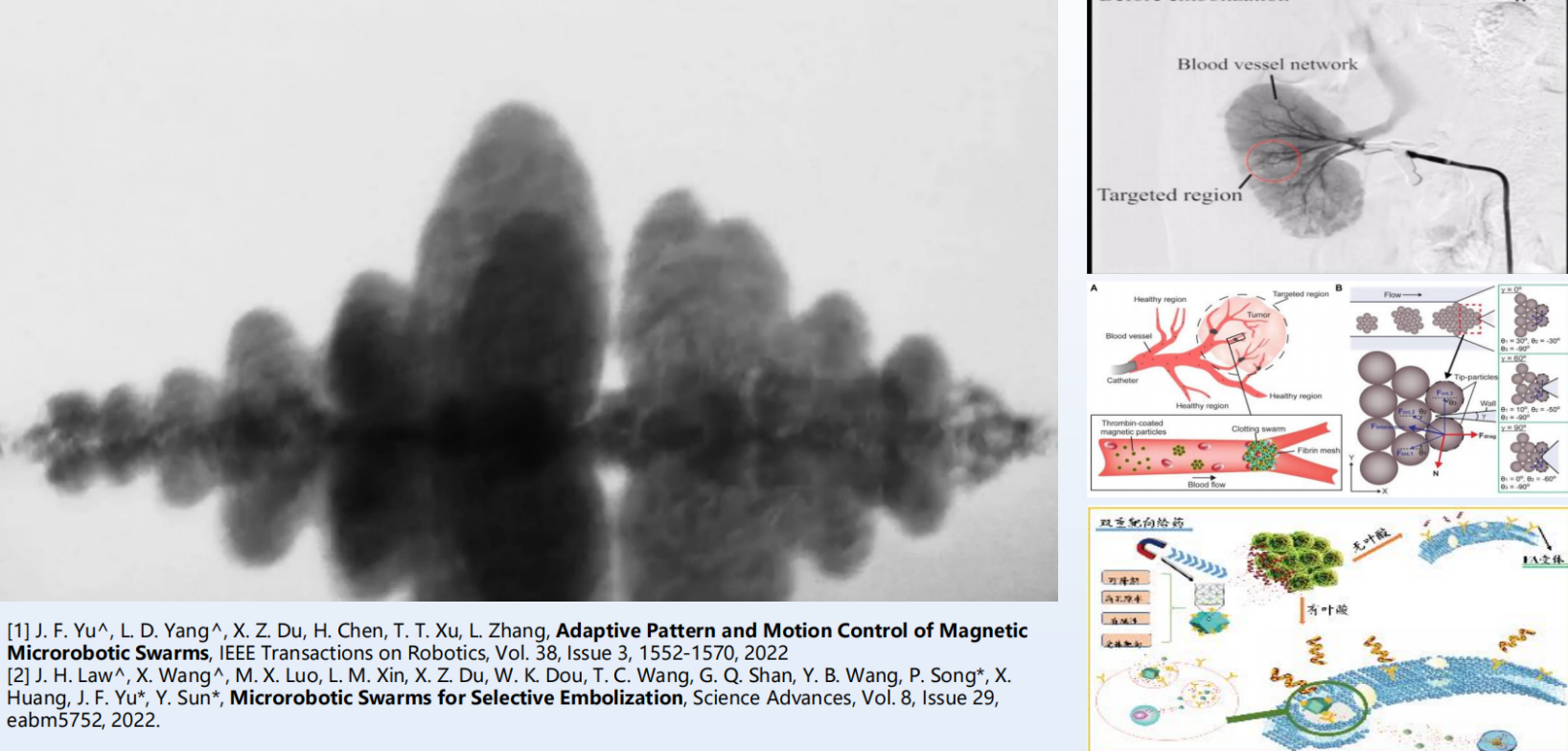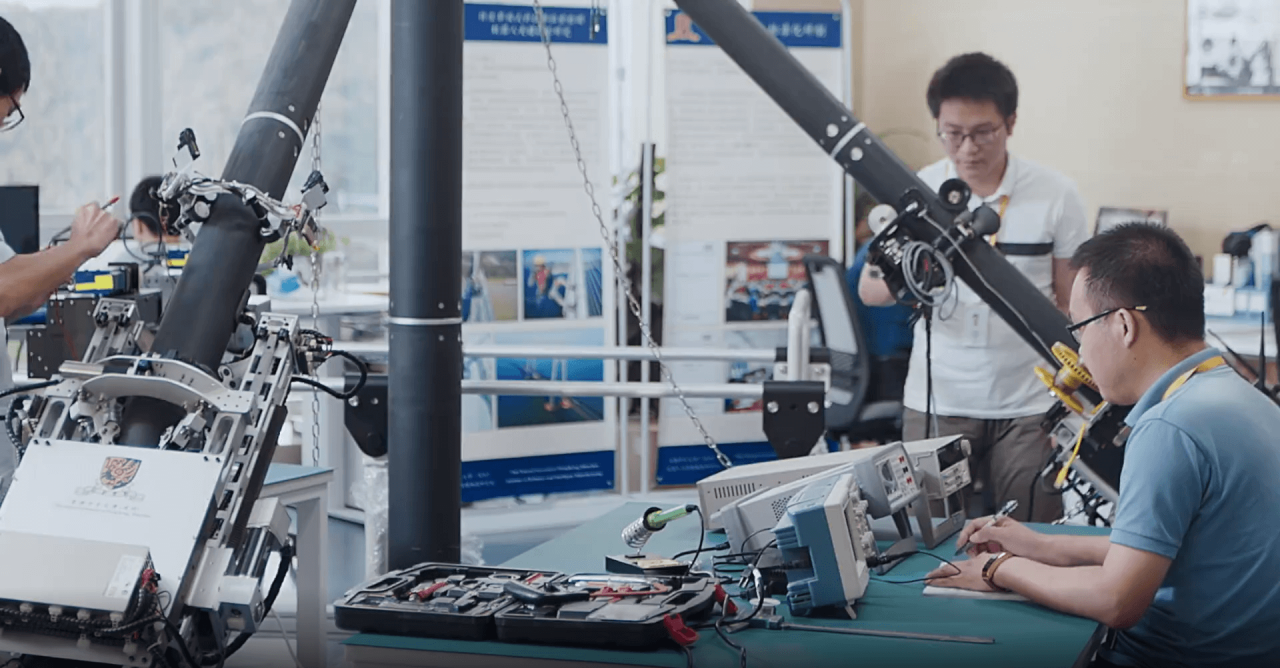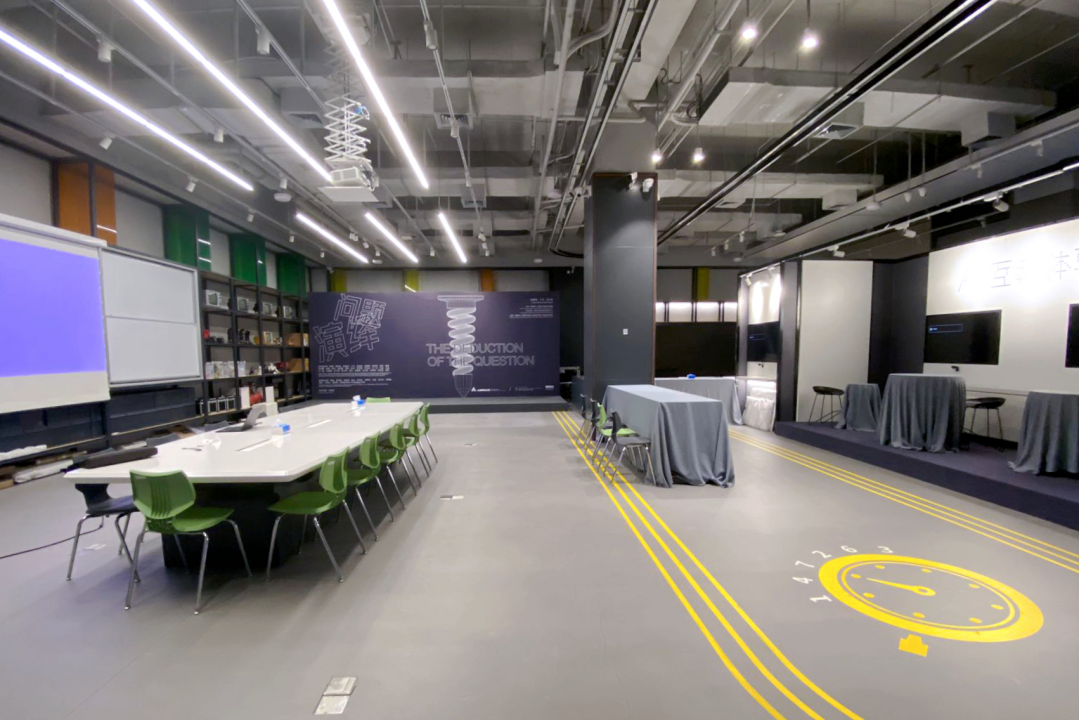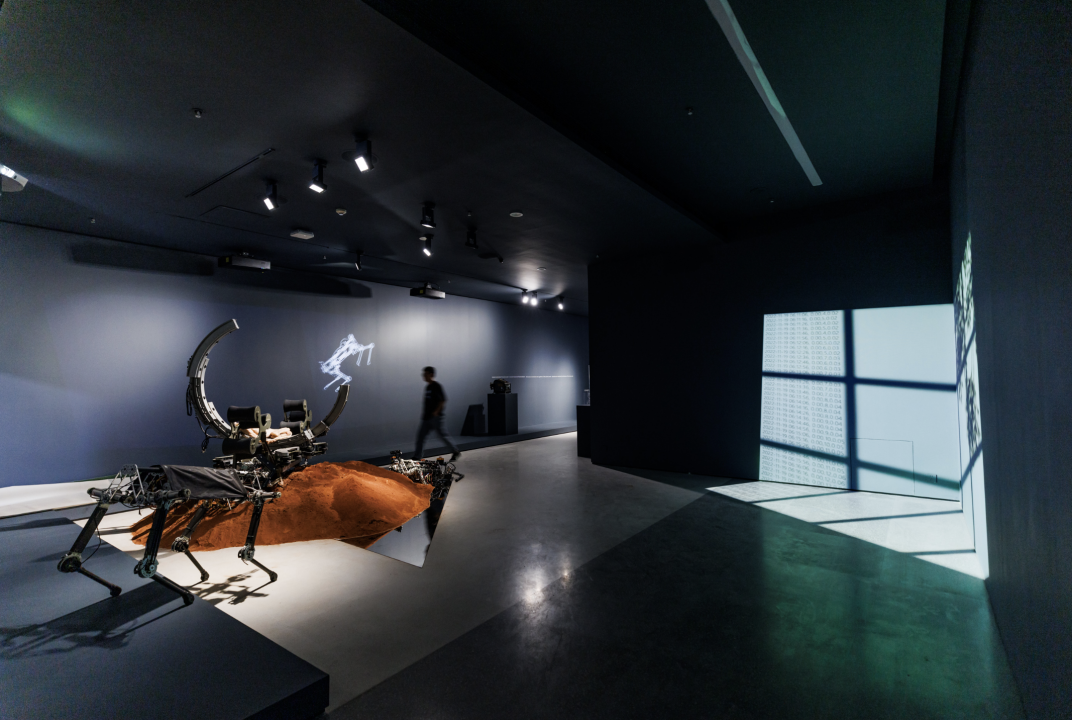Disciplines Integration | Experiment | Science&Art | Al&Robot | Research &Creation | Localization Innovation
Jointly established by the Shenzhen Institute of Artificial Intelligence and Robotics for Society (AIRS) and the Institute of Public Art, Benyuan Design Research Center at Shenzhen University,
This interdisciplinary creative lab explores the intersection and unknown boundaries between science and art, integrating perspectives from art, science, design, and engineering.
The lab’s research focuses on the convergence of artificial intelligence, technological art, digital creativity, and public art. Through cross-disciplinary research and practice, it envisions a transformative future at the nexus of science and art, challenging conventional perceptions and understandings of the world.
The AIRSpace Gallery, grounded in AIRS’s foundational scientific research and the creative output of the Science + Art Joint Lab, establishes a new model of collaboration between science and art, where rigorous research informs artistic creation, and art, in turn, reshapes the value and meaning of science.
The Chinese University of Hong Kong, Shenzhen
Shenzhen Institute of Artificial Intelligence and Robotics for Society (AIRS)
One of the Shenzhen government’s top ten fundamental research institutions, AIRS is supported by the Chinese University of Hong Kong, Shenzhen. In the global CSRankings for computer science institutions, its robotics program has ranked #1 in China and #4 in Asia for five consecutive years.
AIRS addresses strategic needs at the city, Greater Bay Area, and national levels, focusing on research in artificial intelligence and robotics. Its four major research areas include: machine learning, motion intelligence, human-robot collaboration, and swarm collaboration.
As an international and open research institute, AIRS gathers outstanding scientists from around the world, promotes original breakthroughs and key technological advances, and explores the frontiers of science through tech transfer and innovative mechanisms.
The Chinese University of Hong Kong, Shenzhen
Shenzhen Institute of Artificial Intelligence and Robotics for Society (AIRS)
Executive Vice President: Dr. Ning Ding
Dr. Ning Ding is the Executive Vice President of the Shenzhen Institute of Artificial Intelligence and Robotics for Society (AIRS) and Director of the Center for Special Robots. He also serves as Deputy Director of the Institute of Robotics and Intelligent Manufacturing at the Chinese University of Hong Kong, Shenzhen.
He holds multiple national-level appointments, including:
-
Member of the Subcommittee on Robots for Special Equipment (TC591/SC1) under the National Robot Standardization Committee
-
Member of the SAC/SWG13 National Working Group on Special Operation Robots
-
Member of the NEA/TC35 Power Industry Robotics Standardization Technical Committee
-
Director of the Joint Laboratory for Urban Maintenance Special Robots for Guangdong-Hong Kong-Macao universities, under the Guangdong Provincial Department of Education
-
Board Member of the Guangdong Society of Artificial Intelligence and Robotics
Dr. Ding has led or participated in numerous key national and regional research projects, including those under the National Key R&D Program, National Natural Science Foundation of China (NSFC) Key Projects, Guangdong-Guangxi Joint Key Projects, Shenzhen Key Basic Research and Sustainable Development Programs, and the national 863 and 973 Programs.
He has led his team in developing a series of special-purpose robotic systems, including those for bridge cable inspection, under-bridge rail inspection, power transmission line inspection, security patrol, and reservoir inspection—many of which have been gradually deployed in real-world applications.
He has published over 50 papers in international journals and conferences, holds more than 50 authorized invention patents and two international patents, and has contributed to the development and publication of 5 national standards in the field of special-purpose robotics. He received the Best Application Paper Award at IROS 2021 and was nominated for the Best Mechanisms and Design Paper Award at the same conference.
Public Art Research Institute, Benyuan Design and Research Center, Shenzhen University
The Benyuan Design Research Center of Shenzhen University is an important academic platform for architectural research and teaching, led by Professor Meng Jianmin, an academician of the Chinese Academy of Engineering. Affiliated with the School of Architecture and Urban Planning, the center actively engages in scientific research and theoretical education across various fields, including smart architecture, sustainable architecture, modular construction, public art, metaverse urbanism, and complex urban design.
The Institute of Public Art studies the relationship between public art and architecture, environment, and space. Its focus is on interactivity in public art and the exploration and development of new artistic expressions, innovative media, and materials.
Public Art Research Institute, Benyuan Design and Research Center, Shenzhen University Director
Shenzhen Institute of Artificial Intelligence and Robotics for Society (AIRS)
Sci-Art Co-lab
Artistic Director: Shen Shaomin
Shen Shaomin is a contemporary artist, documentary filmmaker, and poet. He currently lives and works in Shenzhen, Beijing, and Sydney. Known for his multidisciplinary, cross-media practice, his work spans installation, video, documentary, conceptual painting, poetry, and public art.
He served as the chief director of the international artist-led light show at the Shenzhen Civic Center. His works are held in numerous collections, including museums, institutions, universities, foundations, and private collectors in China and internationally.
Major solo exhibitions include:
“A Herd of Zebras Crossing the Road”, “A Brief Scientific History of Shen Shaomin”, “Chinese Carp”, “There Is No Problem Here”, “Forget It, Wind”, “Project No. 1”, “Kowtow Machine”, “Bonsai”, and “Jian-X”.
Curatorial projects: “Problem Derivation”
Major international exhibitions:
Sydney Biennale, Liverpool Biennial, Busan Biennale, Kyiv Biennale, Shanghai Biennale, Guangzhou Triennial, Shenzhen-Hong Kong Bi-City Biennale of UrbanismArchitecture, and the Macau Biennale.
He led the design of the Yun Art Museum, which received multiple prestigious awards:
-
Best of Best in Exhibition Space, 2022 AMP (Architecture MasterPrize, USA)
-
Citizen Space Grand Prize, 2022 DNA Paris Design Awards
-
Golden Pin Design Award, Taiwan, 2022
-
His 2017 work “Summit” was named one of the Top 10 Highlights at Art Basel Hong Kong.
Documentaries: I Am Chinese, The Disappearing Village, Seda Diary, A Monk’s Temple
Poetry collections: I Am My Own Result, I Lift Up My Own Shadow
“Science-Art District”
A "three-point corridor" model is formed, linking a Tech-Art Exhibition Hall, Scientific Laboratories, and Art Studios:
Artworks emerge from scientists’ laboratories, are reinterpreted and transformed in artists’ studios, and ultimately presented in the tech-art exhibition space.
-
Three-Point Corridor: A model connecting the Tech-Art Exhibition Hall, Scientific Laboratory, and Art Studio—forming the framework of the Science-Art District.
- Science–Art Relay:
Artists reconstruct and creatively repurpose failed, discarded, or iterated scientific prototypes, models, or devices, turning them into new artistic expressions.
- Scientific Foundation: Each artwork is backed by rigorous academic and scientific research. Art also reinterprets and reactivates the latent value of scientific exploration, creating an art space embedded within a research institution.
-
Interdisciplinary Integration: Powered by AIRS, the district gathers leading scientists and artists for collaborative creation, building an interdisciplinary, international platform for dialogue and cooperation.
- Focus on AI + R: Centred on cutting-edge Artificial Intelligence and Robotics (AI + R), the initiative expands into broader artistic inquiries, including bio-ecology, humanities, social issues, and philosophy of technology.




Collaborating Units: Bantian Subdistrict Office, Galaxy Holding Group
Together, they are co-creating a distinctive, intelligent Science-Art District.
Public outdoor spaces such as pocket parks, No.5 Commune Greenbelt, and covered walkways connect directly with the AIRS scientific research labs. The AIRSpace Tech-Art Exhibition Hall extends both scientific projects from AIRS laboratories and artworks from the AIRSpace gallery into these outdoor public areas, creating a dynamic interaction between indoor and outdoor spaces.
This integration enhances the public environment on three levels: technological, artistic, and social. In the future, the model may be further expanded to include a wider range of surrounding public spaces in various forms.

“Three-Point Corridor”
Shenzhen Institute of Artificial Intelligence and Robotics for Society (AIRS)
Scientific Laboratory:
 As one of Shenzhen’s Top Ten Fundamental Research Institutions, AIRS is supported by The Chinese University of Hong Kong, Shenzhen and serves as a primary site for both fundamental scientific research and technology transfer.
As one of Shenzhen’s Top Ten Fundamental Research Institutions, AIRS is supported by The Chinese University of Hong Kong, Shenzhen and serves as a primary site for both fundamental scientific research and technology transfer.This foundation ensures that every artwork is backed by rigorous, high-level scientific research. Artworks emerge from scientists’ laboratories and transition into gallery exhibitions and urban public spaces, bridging the worlds of science and art.
· SciArt Co-lab
Artist Studio and Exhibition Extension Venue

In this future-oriented experimental studio, artists transform unused, discarded, obsolete, or failed prototypes and equipment from scientists into works of art—turning scientific failure into another form of success: art.
At the same time, the studio also serves as a venue for forums, lectures, seminars, and workshops, creating a dialogue mechanism and collaborative platform for cross-disciplinary innovators.
· AIRSpaceExhibition Hall
SciArt Exhibition Hall

SciArt Exhibition Space focusing on topics related to Artificial Intelligence and Robotics, this space presents reflections on fundamental questions and core concepts through artistic thinking, pushing the boundaries of how we understand both science and art.
It is a site of ongoing creation—regularly producing new works and exhibitions, with continuous iteration, academic reflection, and the development of a curatorial thread known as the “Questions” series.